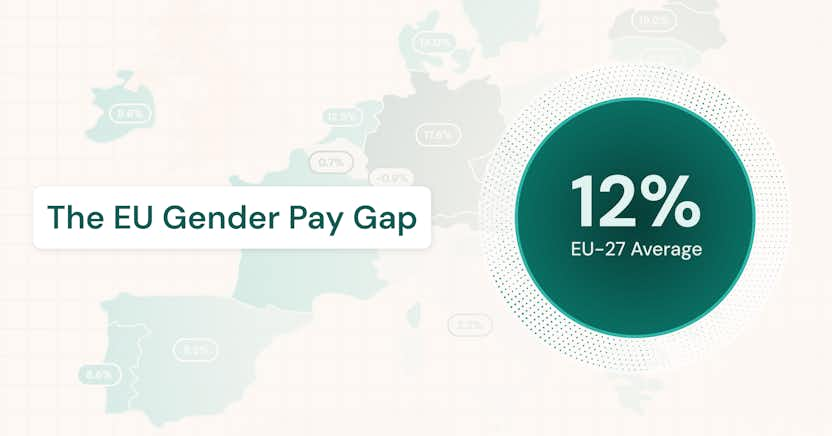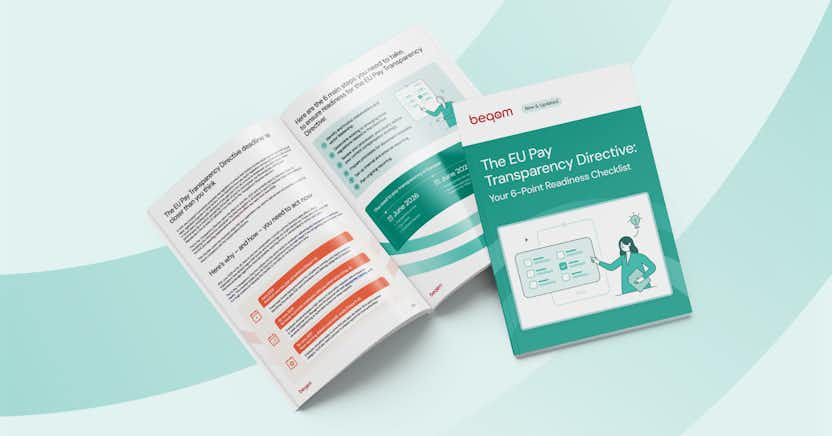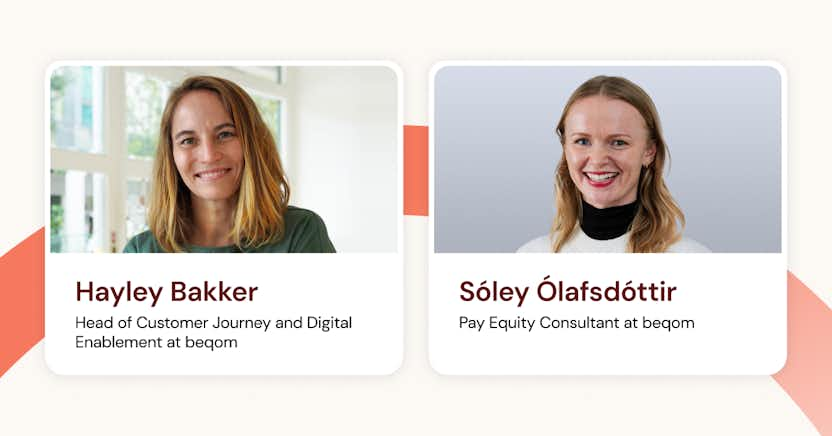Creative Compensation: 8 Innovative Strategies for Inflationary Times

Learn more about the following beqom products
Understanding the challenge: inflation’s impact on compensation
Inflation has significantly reduced employee buying power, placing pressure on organizations to attract and retain talent amidst rising costs. While offering higher pay may appear to be the simplest solution, it is not always sustainable. Organizations must explore innovative approaches to address inflation’s impact while maintaining cost efficiency and employee satisfaction.
Rethinking rewards: why higher pay isn’t the only solution
A report from Gallagher, the 2022 U.S. Career Wellbeing Report, shows that more than 3 in 4 companies enhanced base salaries to meet recruitment and retention objectives. Nearly 8 in 10 employers (78%) increased base salary for FY 2022 at nearly two times the rate of other total rewards to attract workers. Yet Gallagher points out that “higher pay on its own isn’t going to help. A high level of engagement requires employers to balance the value of employees’ individual pay with the value of their personal work experience.” Indeed experts suggest that there are other options to look at besides raising pay.
“Organizations should also remember that pay is only one tool in their toolkit,” says Lauren Mason, Senior Principal in Mercer's Career practice. “Take a broader view of total rewards and implement benefits that help meet workers’ needs – particularly those that are low to no cost, but of high value – like flexible working, or financial wellness programs.”
“Compensation, while being a key lever for attracting and keeping talent, is not the only answer," says McMullen. “Nonfinancial rewards are also key, particularly learning and development options” to help careers advance. "Employees need to have a positive view of their opportunities to learn and grow with the organization.”
The true cost of inflation on employee buying power
Inflation erodes the value of wages, leaving employees, particularly those in lower-wage roles, struggling to meet their basic needs. Businesses must evaluate the real cost of inflation on their workforce and determine which groups are most affected. A failure to address these disparities can lead to dissatisfaction, reduced productivity, and higher turnover.
Exploring non-wage alternatives to retain talent
Non-wage strategies, such as flexible work schedules, wellness programs, and professional development opportunities, offer cost-effective ways to boost retention. These alternatives demonstrate a company’s commitment to employee well-being, often providing greater perceived value than salary adjustments alone.
4 innovative strategies to balance costs and retain employees
So what’s an employer to do? Speaking in the webcast, “The new shape of work - rising costs and compensation considerations,” Andre Rooks, Partner and Career Business Leader at Mercer, suggests four strategies employers should consider:
Prioritizing equity in compensation for key roles
Equity-based compensation, such as stock options or restricted stock units (RSUs), is a powerful tool for attracting and retaining talent in critical roles. Unlike salary increases or cash bonuses, offering equity does not require immediate out-of-pocket costs, making it a cost-effective strategy for companies managing tight budgets. Equity aligns key employees' interests with the long-term success of the business while providing significant financial incentives. For high-demand roles, leveraging stock options can help organizations differentiate themselves, particularly when competing with startups or tech firms that heavily rely on equity in their compensation packages. Regularly reviewing and benchmarking equity offerings ensures they remain competitive and effectively incentivize top performers.
Implementing living wage adjustments for low-wage workers
Inflation disproportionately impacts low-wage employees, making it essential to provide living wage adjustments. Supplementary programs added to reward packages, such as transportation stipends, lump-sum bonuses, or grocery vouchers, can offer immediate relief while showcasing the organization’s commitment to its workforce. Some employees may also benefit from being paid more frequently to help with cash flow.
Enhancing transparency: building trust through pay clarity
Transparent pay practices help employees understand how their compensation is determined. By sharing salary ranges, outlining pay structures, providing clear sales commission plans, and explaining market adjustments, companies can reduce employee uncertainty, build trust, and comply with evolving pay transparency laws.
Strengthening the employee experience beyond compensation
A great employee experience often outweighs financial rewards. Investing in tools for continuous recognition, feedback, and career development empowers employees and strengthens their connection to the organization.
Beyond base pay: 4 creative talent strategies for long-term success
Long-term success requires organizations to go beyond traditional pay structures. By adopting innovative approaches, businesses can address workforce needs and position themselves as employers of choice. Gartner suggests four innovative talent strategies that can help reign in compensation costs:
Leveraging time as a reward: flexible and radical work schedules
Time has become one of the most valued commodities for employees. Offering options like compressed workweeks, reduced hours, or flexible schedules gives employees the autonomy they crave, improving work-life balance and retention.
Driving mobility: internal career growth and upskilling
Internal mobility is a win-win for employees and organizations. Promoting from within, offering lateral career moves, and investing in upskilling programs help retain top performers while reducing recruitment costs and turnover.
Expanding talent pools with inclusive recruitment strategies
Expanding hiring efforts to include candidates with non-traditional backgrounds or from underrepresented groups creates diverse and dynamic teams. By focusing on skills and potential rather than rigid qualifications, organizations can unlock untapped talent pools.
Customizing benefits for a personalized employee experience
Tailoring benefits to align with employees’ unique needs—such as mental health support, childcare assistance, or financial planning resources—demonstrates a commitment to their well-being. Personalized perks create a deeper connection between employees and the organization.
Building connections and loyalty in hybrid workforces
Today’s macroeconomic environment has created a kind of hypermarket for talent, with record-setting quit rates and job openings, increased retirement, and high employment rates. As a result, new talent is at a premium, which then increases the gap between new and existing employees, creating pay compression and pay equity problems, which in turn further exacerbate retention issues.
To think that this can all be sorted out by restructuring the entire pay scale in a company is just not practical. Yet we want to have happy, engaged, loyal employees, who feel connected to the company. And there is a new challenge. The shift to hybrid and remote work has disrupted traditional methods of fostering connection and loyalty. To maintain employee engagement, companies must adopt new tools and strategies.
Technology’s role in fostering team spirit and engagement
The workplace has changed but the tools have not yet caught up. Yes, we all have remote meeting software. But managers need new tools to deal with new problems. How do we create connections now? How do we engender team spirit and loyalty? How do we get the same depth of feedback and informal input we get in the office? Our goals and deliverables have not changed, so how do we manage people to produce results?
Technology bridges the gap in hybrid environments, enabling managers and teams to stay connected. Collaboration tools, virtual team-building activities, and real-time communication platforms help maintain a sense of belonging and team cohesion.
Innovative tools for continuous feedback and recognition
We need tools to connect, value, and reward people. We need to build trusted relationships but we no longer have the same means of connecting. Hence we need tools to help managers check in with employees, give praise and constructive feedback, and show they value their contribution. We need tools to help teams connect with each other in a natural, fluid way, in the daily flow of work.
Continuous feedback platforms ensure employees feel supported and valued. Tools that facilitate regular recognition and constructive feedback help organizations address performance challenges while maintaining strong relationships in dispersed teams.
Why compensation and performance technology are critical in inflationary times
As inflation and labor shortages persist, technology plays a vital role in helping organizations adapt their compensation and performance strategies to meet employee expectations and market demands.
Adapting to change with total compensation and performance platforms
Compensation platforms enable organizations to implement flexible reward systems, such as role-specific adjustments, performance-linked bonuses, and personalized benefits. These tools allow businesses to respond quickly to market trends and employee needs.
Creating a people-centric rewards and performance culture
Integrating compensation and performance technology fosters a people-focused culture. By aligning rewards with organizational goals and offering tools for continuous feedback, businesses can boost engagement, improve retention, and drive long-term success.
Conclusion: creative strategies for compensation success
Inflation challenges organizations to think beyond traditional pay structures. By adopting creative compensation strategies, enhancing the employee experience, and leveraging technology, businesses can navigate inflation effectively while retaining top talent. For additional insights, see our complete guide to compensation management.







